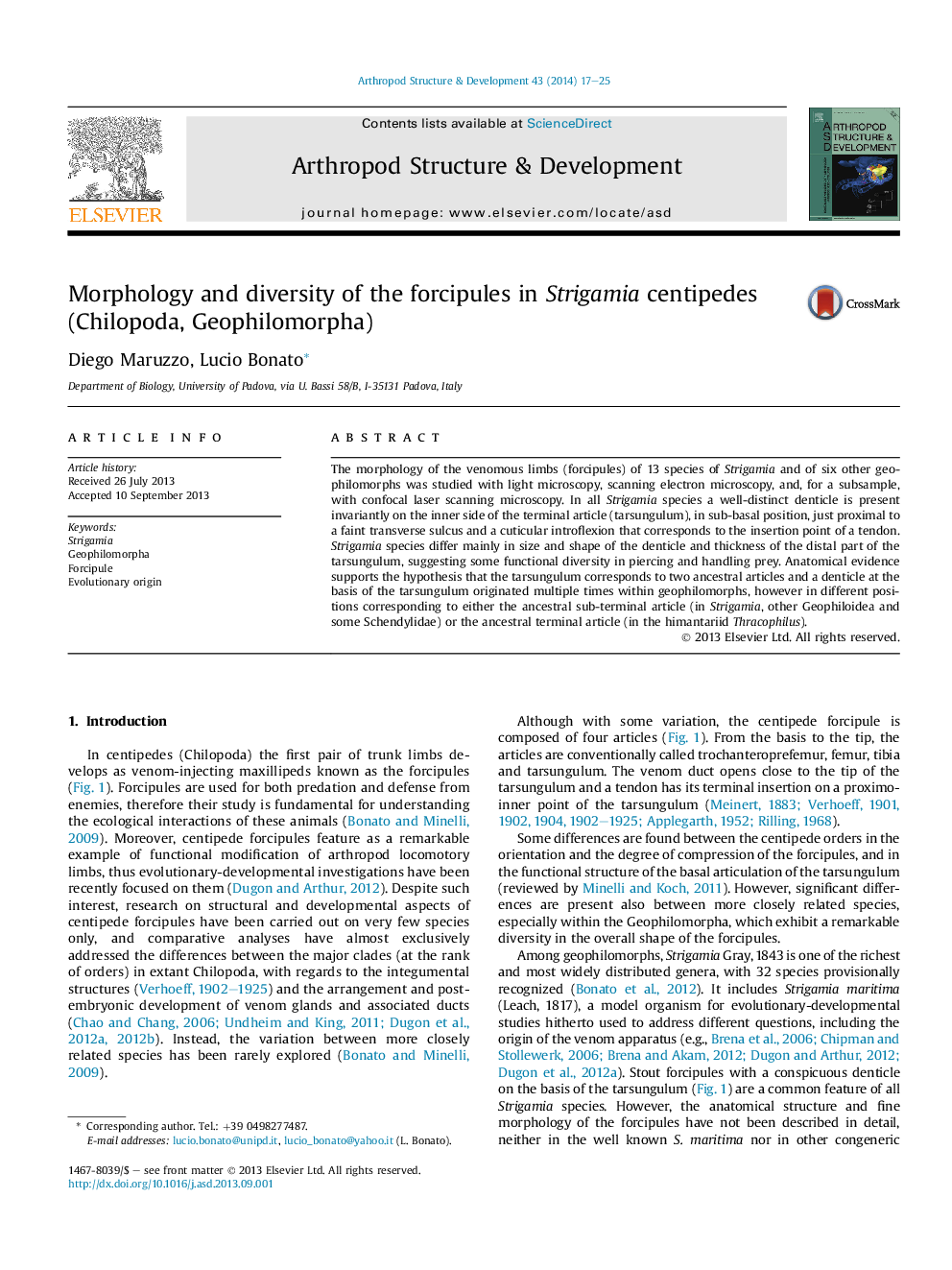| Article ID | Journal | Published Year | Pages | File Type |
|---|---|---|---|---|
| 2778656 | Arthropod Structure & Development | 2014 | 9 Pages |
•We studied structure and shape of forcipules in different species of Strigamia.•Hitherto ignored differences have been found in functionally relevant features.•A conspicuous denticle develops basal to an ancestral articulation.•Similar denticles in other centipedes develop in the same or different position.
The morphology of the venomous limbs (forcipules) of 13 species of Strigamia and of six other geophilomorphs was studied with light microscopy, scanning electron microscopy, and, for a subsample, with confocal laser scanning microscopy. In all Strigamia species a well-distinct denticle is present invariantly on the inner side of the terminal article (tarsungulum), in sub-basal position, just proximal to a faint transverse sulcus and a cuticular introflexion that corresponds to the insertion point of a tendon. Strigamia species differ mainly in size and shape of the denticle and thickness of the distal part of the tarsungulum, suggesting some functional diversity in piercing and handling prey. Anatomical evidence supports the hypothesis that the tarsungulum corresponds to two ancestral articles and a denticle at the basis of the tarsungulum originated multiple times within geophilomorphs, however in different positions corresponding to either the ancestral sub-terminal article (in Strigamia, other Geophiloidea and some Schendylidae) or the ancestral terminal article (in the himantariid Thracophilus).
